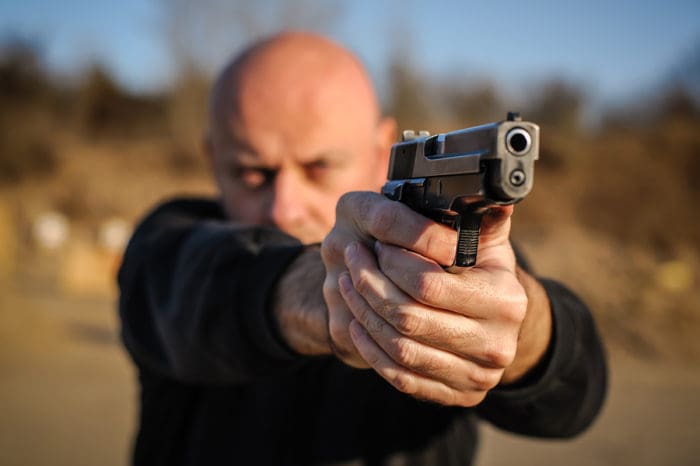Shoot a semi-automatic pistol often enough — any brand or model — and it will eventually fail to fire. It may be the gun’s fault (you bought a jam-o-matic), the magazine’s fault (a frequent culprit), the ammunition’s fault (cheap or out-of-spec loads) or your fault (limp-wristing, a dirty gun). Whatever the reason, pulling the trigger and hearing only a “click” is never a good thing.
You can limit the chances of a malfunction by 1) performing regular basic maintenance like keeping your gun clean and lubricated and looking for worn parts, 2) using quality ammunition, and 3) using good technique.
That said, every shooter will eventually encounter a stoppage. That can be an annoyance (interrupting your range session) or a threat to your life (if it happens in a defensive situation). The key is knowing how to get your gun going again as quickly and efficiently as possible.
The kinds of problems you encounter can generally be broken down into one of three types and it’s a very good idea to know how to handle each of them.
Failure to Feed
This type of malfunction happens when a semi-automatic handgun doesn’t load the next round into the chamber. There are a few different types and causes for this, but most of them are related to the magazine. It may not have been fully inserted, it could have a bad follower or the spring may be worn out. Bad ammunition or even a dirty feed ramp can be at fault.
How to handle it: To clear this (and most pistol jams), use the tap-rack-bang drill. First, remember you’re dealing with live rounds. Keep your pistol (as always) pointed in a safe direction.
Tap the bottom of the magazine — hard — with the palm of your off hand. That will make sure the magazine is fully inserted. Then rack the slide using the slingshot method to eject the jammed round and load the next one. Check to ensure the new round loaded, get the handgun back on target and make it go bang.
If that doesn’t work (sometimes in the case of a double feed malfunction), you may have to drop the loaded magazine, clear the rounds manually, then reload the pistol. Trying a fresh magazine could help you diagnose the problem as well.
Failure to Eject or ‘Stovepipe’
Normally, after firing a round, the empty case is grabbed by the extractor and thrown clear, making room in the chamber for a fresh round. In this case, however, the empty casing fails to leave the gun. It can get jammed in the ejection port, held in place by the force of the closed slide, while sticking up vertically. Thus the name “stovepipe.”
This kind of failure can be caused by “limp wristing” or a bad or dirty extractor.
How to handle it: Again, like the failure to feed, the tap-rack-bang drill is a good place to start. Tap the magazine, slingshot the slide to cycle the action and make the gun ready to fire. Some shooters like to angle the gun about 20 degrees or so to ensure the empty casing falls free of the pistol.
Failure to Go Into Battery
Your semi-auto pistol just fired and the next round was loaded into the chamber. Everything seems to be working normally, but the slide didn’t go all the way back to its fully seated and locked position. The gun won’t fire and you may notice the slide isn’t fully forward. This is known as a failure to go into battery.
This failure is most often cause by a dirty gun (built-up gunk on your slide rails, feed ramp or in the chamber). Other causes can be limp wristing, or bad (out of spec) ammunition that won’t seat fully. You could also have a weak recoil spring.
How to handle it: Keeping the pistol pointed in a safe direction, give the back the slide a bump with he heel of your support hand. Many times this will be enough to pop it fully into battery and get you going. If that doesn’t do it, don’t try to force it. You may have a double-feed or other jam. If the slide doesn’t go back into battery with a nudge, once again, the tap-rack-bang drill is the method of choice.
Especially in the case of a dirty gun, you may need to empty the pistol and rack the slide repeatedly to free it up to get it working consistently until you can disassemble it and clean it.
– – – – – – –
These are the three most common types of malfunctions you’re likely to come across while shooting. Again, they’re most often due to a dirty gun, faulty equipment (usually a bad magazine) or shooter-induced problems (user error). The basic tap-rack-bang drill is the quickest default method for clearing just about any malfunction.
You may have plenty of time to fix it or need to take immediate action in a self-defense situation. Either way, practicing the process of malfunction clearing is a very good idea. You can do this at home with dummy rounds.
But if your gun continues to experience problems, have a gunsmith look at it before you try to shoot it again or rely on it for self-defense.
